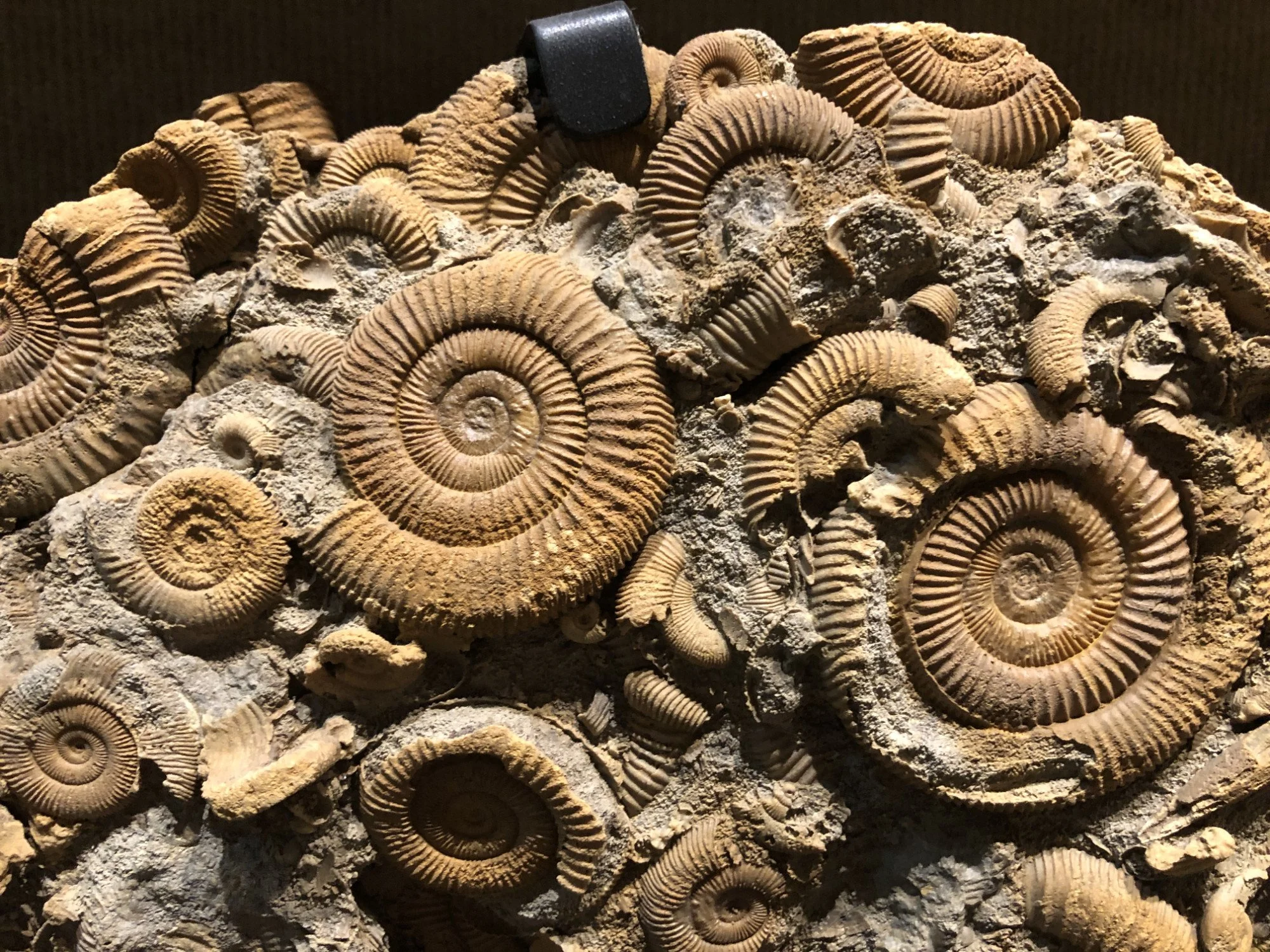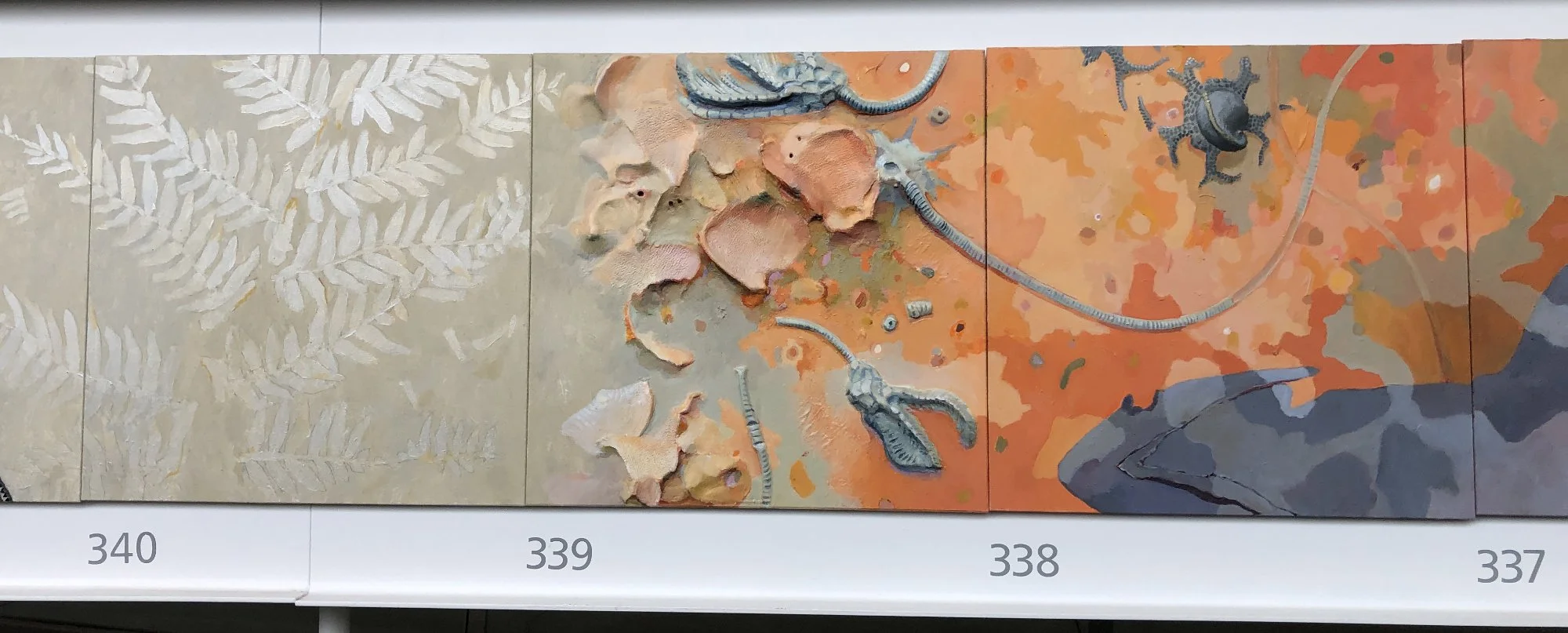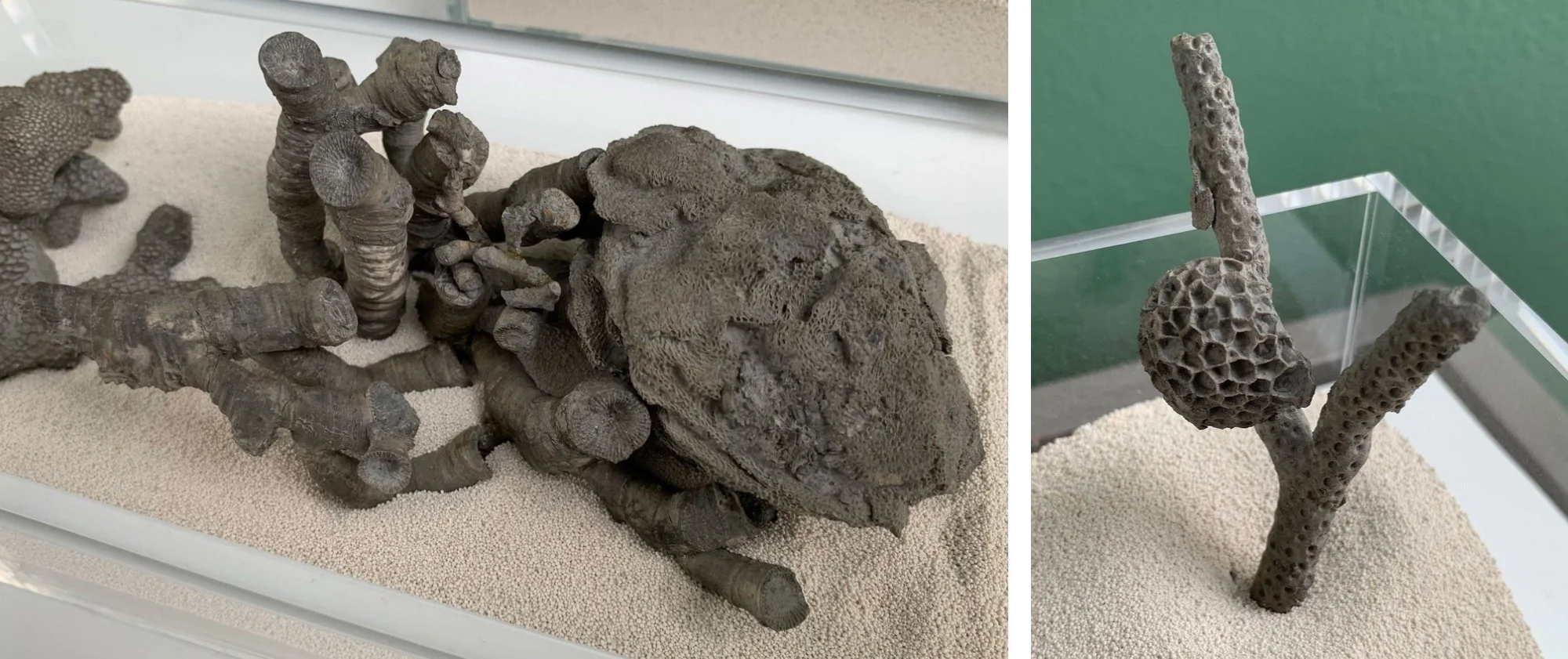Housewarming Gifts
Image: NASA. Earthrise, seen from orbit around the moon by the crew of Apollo 8 in 1968.
By Dr. Ingrid Zabel, Climate Change Education Manager
April 19, 2023
A housewarming gift is a lovely tradition, welcoming someone into a new space, whether it be a house that they own, an apartment that they rent, or something else entirely. This Earth Day, I’m thinking about turning this tradition around and appreciating a space that is not new to us: our home, the Earth.
The Earth is 4.5 billion years old, so when our species—Homo sapiens—evolved around 300,000 years ago, we “moved into” a very old home. It’s been a great place to live, with plenty of water and food to sustain us, materials for us to build shelter and tools and to create art, and mysteries of nature to pique our curiosity. What kind of gifts could we give to celebrate our home? A visit to PRI’s Museum of the Earth generates lots of ideas.
The irony of talking about a housewarming gift on a planet that is rapidly warming is not lost on me. Our gifts should be emotionally warm only!
The Gift of Knowledge
I love knowing my family’s history and thinking about how my life is connected to my ancestors’ lives. I’m not alone in this, as genealogy is a multi-billion dollar hobby around the world. At the Museum of the Earth, one can take this interest many steps further and learn about the evolution of life and our ancient, non-human ancestors.
It’s fascinating to me that whales have ancestors who lived on land. One can see evidence of this in the vestigial hip bones on the huge skeleton of a North Atlantic Right Whale that you see when you enter the Museum. Life on Earth began in the oceans, and then some animals moved onto land. Life then continued to evolve on land, but some life evolved in a way that led it back to the sea. This feels like important knowledge to me, that evolution is not a linear, “upward” progression—it’s just change. Understanding this helps me see myself more clearly in the history of the Earth, even as I can still see myself as a product of my family history.
North Atlantic Right Whale skeleton at the Museum of the Earth.
The Gift of Time
It can often feel like there aren’t enough hours in the day to fit in everything we want to do. But what is a day? The Earth spins around its axis, effectively producing day and night as we turn from facing the sun to facing away from it. This happens 365 times in a year. If we think a day is not long enough now, we should be thankful we didn’t live millions of years ago. John Wells, a professor at Cornell University, figured out that corals have tiny growth bands, each one representing a single day’s growth. When he counted the number of growth bands in fossil corals from around 400 million years ago, he found that they had about 400 daily growth bands. In other words, at the time that coral lived, there were about 400 days in a year!
The Earth’s rotation has been slowing down, so we are being given the gift of longer days, compared with the very ancient past. You can learn more about John Wells and his work in our blog post John W. Wells and Coral Geochronometry and in our current temporary exhibit NY Rocks! online and at the Museum of the Earth (open until December 31, 2023).
John W. Wells (1907-1994) alongside boxes of his Devonian coral specimens, now housed in the collections at PRI.
The Gift of Perspective
In the Museum of the Earth’s permanent exhibit Changing Climate: Our Future, Our Choice, you will see a set of two large graphs on the wall, showing the surface temperature in Antarctica and the concentration of carbon dioxide in the atmosphere over the last 800,000 years. That’s a long time relative to human lifetimes.
Graphs of carbon dioxide (blue) and Antarctic surface temperature (red) from 800,000 years ago to today.
The graph shows a pattern of ups and downs in temperature and carbon dioxide, moving together. The cycles you see on the graphs were caused by periodic changes in the shape of the Earth’s orbit around the Sun and changes in the Earth’s tilt and wobble; the large amount of change between upper and lower peaks in the graph was caused by changes in carbon dioxide (you can learn more about these cycles here.) Carbon dioxide in the Earth’s atmosphere has influenced Earth’s temperatures at many scales throughout Earth history. If you think of the Earth’s climate system as a machine that can be tuned and controlled by different factors represented by knobs, the biggest tuning knob for the Earth’s temperature is the level of carbon dioxide in the atmosphere. Generally, when carbon dioxide levels are high, temperatures are high, and vice versa. Carbon dioxide is not the only factor to cause changes in the Earth’s temperature, but it’s the main one when we’re looking over geologic time.
At the end of the graph that shows the past 150 years, carbon dioxide levels shoot upward extremely rapidly, far beyond the range of variability seen in the rest of the graph. This is the result of burning fossil fuels that began during the Industrial Revolution: when we burn coal, oil, and natural gas, we release carbon dioxide. Plants and the ocean can only absorb so much (about 50%), and the excess accumulates in the atmosphere.
Seeing the natural variation of carbon dioxide levels in the deep past puts today’s levels into perspective. It shows us that our impact is enormous. We already know that humans can impact the planet in profound ways: we have built massive structures on land, transformed vast areas of soil through agriculture, dug deep holes underground, and left huge patches of plastic trash in the oceans. So it should come as no surprise that we can change the chemistry of the atmosphere. Seeing a graph that compares past levels with today’s levels gives us a sense of perspective of just how large and rapid that change is.
Visit our climate change exhibit at the Museum of the Earth and online.
The Gift of Astonishment
Here are just a few of the astonishing facts about the history of our planet, all of which you can learn more about in the Museum of the Earth.
Tiny, photosynthetic marine microorganisms that lived over 2 billion years ago first created the Earth’s oxygenated atmosphere, likely enabling the evolution of multicellular organisms. (Thanks, little guys!)
Creatures exist that have both lungs and gills—they’re called lungfish, and you can see a live one at the Museum of the Earth.
What is now Central New York was covered by a shallow sea for over 200 million years.
A type of millipede that lived over 300 million years ago could grow to be over 6 feet long!
Enormous flying reptiles once filled the skies, and you can see a life-size replica of one (Quetzalcoatlus) at the Museum of the Earth.
80-95% of all species of life went extinct 252 million years ago, at the end of the Permian Period.
About 20,000 years ago, what is now Central New York was covered by ice about a mile thick.
Our planet is an astonishing, wondrous place.
Model of Quetzalcoatlus, a pterosaur (flying reptile) with a 40-foot wingspan that lived in the Late Cretaceous. This model was permanently gifted to PRI and its Museum of the Earth in 2015 by the Smithsonian Institution.
The Gift of Beauty
Beauty is highly subjective, but I think it’s likely that most of us could find some aspect of ancient life, and certainly of life today, that is beautiful. You don’t have to understand the science behind something to find it beautiful, but to me, understanding the science of the Earth, its systems, and the life on it deepens my appreciation for its features that I consider beautiful.
Below are images of just three beautiful (in my opinion) objects you can see at the Museum of the Earth.
Fossil Ammonoids. Dactylioceras athleticum (Schlaifhausen, near Nürnberg, Germany), Jurassic Period, lived about 173 million years ago
Tiles from artist Barbara Page’s work Rock of Ages, Sands of Time, on permanent display at the Museum of the Earth
Encruster fossils prepared by Gerald Kloc, in the temporary exhibit NY Rocks! (March - December 2023). Left: Tabulate coral (Alveolites) that grew upon a branching rugose coral (Eridophyllum) (Livingston Co.). Right: Small tabulate coral that grew upon the branch of another coral (Livingston Co.)
Feeling astonishment, admiring beauty, and gaining knowledge and deeper understanding about life on our planet can all contribute to caring about that life. Let’s celebrate Earth Day by giving each other and ourselves these gifts, and help protect the life on our planet.









